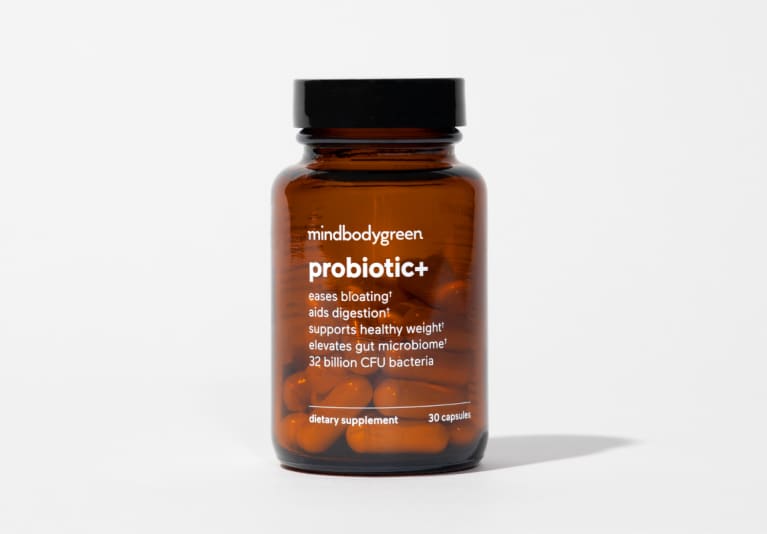
Our editors have independently chosen the products listed on this page. If you purchase something mentioned in this article, we may earn a small commission.
September 17, 2022 — 0:02 AM
We’ve all been there: After upping our morning run mileage or adding a few extra pounds to the squat rack, our muscles are crying in anguish the next day, begging for rest. It’s a common misconception that soreness is essential if you want to make any progress on your fitness journey, in fact, intensely sore muscles can actually impede on future workouts (not to mention general comfort throughout the day.)
So, what can you do to ease sore, weary muscles and prevent excess soreness in the future? Let’s investigate.
First and foremost, understanding why you’re sore can make it easier to mitigate down the road. According to certified personal trainer Mark Barroso, LAT, ATC, CSCS, there are two types of soreness: acute-onset muscle soreness, and delayed onset muscle soreness (otherwise known as DOMS). While muscle soreness can stem from a number of causes from inflammation to injury, we’re going to specifically focus on discomfort due to strenuous activity.
“Acute muscle soreness accompanies fatigue and occurs during and immediately post-workout,” he notes. “Overexertion and strenuous exercise often results in muscular pain and the pain becomes most intense after 24 to 48 hours and then gradually decreases so that the muscle becomes symptom-free within 3 to 4 days. This pain at 24 to 72 hours post-workout is called DOMS.”
Delayed onset muscle soreness (DOMS) is categorized by muscle stiffness and increased tension that is not relieved by stretching. “Whether acute or delayed, the soreness is most likely the result of eccentric muscle actions (the lengthening of the muscle or the second part of the rep),” adds Barroso. DOMS may also be caused from micro tears in the muscle tissue, or “disruption of the connective tissue that holds muscle tendon fibers together.” It’s also worth noting that as you age, you’re more susceptible to soreness after exercising.
How to alleviate sore muscles after a workout.
The good news is there are a variety of ways to alleviate muscle soreness once it has set in, even priming your muscles to become less sore in the future (provided you’re working out at an intensity that meets your skill level!)
probiotic+
Say goodbye to bloating, and hello to a lighter you.*

Taking the time to stretch before and after your workout is one of the best ways to manage muscle soreness, while also working towards injury prevention and mobility. “Active stretching and warming up at least 15 minutes before a workout is very important,” suggests family medicine physician and certified personal trainer Michele Reed, D.O. “Stretching and cooling down after an intense workout helps to relax the muscles and prevent soreness,” she adds.
That being said, Barroso notes a 2011 review suggesting that while stretching certainly reduces muscle soreness, it is not clinically significant in preventing DOMS. To take it one step further, he recommends “a dynamic warmup that includes mobility drills prior to the workout and static stretching post-workout. Plus, I recommend static stretching again once the symptoms of DOMS appear,” Barroso adds.
Try some of our favorite warm-up exercises, along with great cool-down moves here. Or check out three of our favorite active stretches below:
As always, the food you’re eating on a regular basis can have a significant impact on muscle soreness and general comfort in your body as well. “My favorite food to help prevent muscle soreness is pineapples but it is also key to have an adequate amount of protein, healthy fats, and carbohydrate already in your body prior to working out,” suggests Reed. In need of some inspiration? Here are some of our favorite pre-workout snacks to fuel up before your sweat sesh.
What you eat after a workout can also help reduce muscle soreness, and it’s important to remember that your diet functions as an equally vital factor in recovery. “Two cardinal rules to help replenish the body after a workout is to eat protein and pair it with complex carbohydrates,” Tracy Lockwood Beckerman, R.D. previously told mbg. “If you’re on the go, grab an apple with peanut butter or a hard-boiled egg with an orange—those are great food pairings. If you’re eating dinner, have some chickpea pasta with veggies, which has protein, carbs, and fiber to keep you full.”
Hydrating snacks after a strenuous workout can also help to replenish lost electrolytes and allow you to feel great. For this, Jaime Schehr, N.D., R.D. recommends pickles. “Pickles are an excellent post-workout snack,” Schehr once noted. “Not only are they full of salt and minerals, but cucumbers are a hydration powerhouse. They will help your body recover its electrolyte balance faster than drinking water alone.”
Other great recovery food options include:
- Beets
- Celery
- Chicken breast
- Watermelon
- Cantaloupe
- Avocado
Foam rolling—one form of a stretching technique known as self-myofascial release (SMR)—is another great tool for minimizing muscle soreness after a workout. “According to a 2015 Journal of Athletic Training study, foam rolling the leg muscles can decrease DOMS after an intense barbell back squat training session,” explains Barroso. “In this study, foam rolling was done for 45 seconds at a time with 15 seconds rest per muscle group.”
To begin with, start by rolling each muscle group for 30 seconds each to help break up some of the soreness. It’s completely normal for this to be uncomfortable—although it shouldn’t be excruciating.
There’s a reason why massage tools like TheraGun and Hypervolt have become so popular: these forms of percussive therapy really can help with muscle recovery after a tough workout. But while they can be useful, it’s important to exercise some caution with this tool. “I’d recommend not using a massage gun within 12 hours of intense exercise because this could actually make the microtears you’ve created in the gym even worse, causing more damage to the muscle and delaying recovery,” warns Barroso. “Instead, wait 24 hours or until you feel the stiffness from DOMS to use the massage gun.”
Now, this isn’t a daily solution to soreness, but if you’re feeling in need of a full-body reset, you might consider splurging on a massage to help ease some of the tightness in your muscles. “A recent meta-analysis found massage was associated with a small but statistically significant (13%) improvement in measures of DOMS after exercise,” explains Barroso. This is due to an increase in circulation and blood flow, as well as more relaxed muscles. Particularly in the case of muscle soreness, Barroso recommends a sports massage, but he advises keeping it under 30 minutes in order to stimulate the nervous system and prepare you for the next workout without increasing discomfort.
Eastern medicine can also provide a unique set of benefits to the body, specifically as it connects to muscle soreness. In fact, acupuncture can be a great tool for relieving tension in the body and allowing you to relax more effectively. “In one recent study, acupuncture decreased delayed onset muscle soreness (DOMS) in healthy adolescent football players with minimal adverse effects,” explains Barroso. It goes without saying that even if you aren’t a football player you could still benefit from this method of treatment.
While being sore isn’t always a sign that you need to take a break, sometimes it is your body calling for a little rest and recovery. Especially if you’ve been struggling with muscle soreness for several days without relief, this is a telltale indicator you might want to take a day to rest your muscles and recharge your energy. “This could indicate systemic inflammation from overtraining,” physical therapist Sarah Kostyukovsky, P.T., DPT, OCS previously told mbg of soreness that won’t go away.
In fact, rest days should really be a mainstay in your workout routine anyways—soreness aside. “To stay strong and healthy, it’s in your best interest to take at least one day per week to rest,” Stephanie Thomas, CPT, previously wrote for mbg.
There is a distinct difference between soreness and pain, and it’s with the latter sensation that you should consider seeking an expert opinion for before returning to the gym. Muscle soreness is incredibly normal and sometimes trying a new form of exercise is to blame, not even necessarily overexertion.
That being said, if you are experiencing significant pain after exercising and while carrying out your daily activities, this is a red flag that your workout was too intense. “In a lot of exercise classes, you’re not able to gauge the exercises based on your fitness levels. So if you take a class and you’re sore for a week, the class was probably too advanced for you,” Kostyukovsky previously explained.
While muscle soreness isn’t essential to denote a good workout, it is a common result of exercise. That said, working out at a level that challenges your body, while staying mindful of your current strength and abilities is one of the best ways to ensure you don’t overexert yourself. Plus, taking care to drink plenty of water, eat a nutrient-dense diet, warm-up and cool-down, and give your muscles some TLC will help give your body what it needs to feel fantastic.
Remember, every individual body is different and requires unique care, so recognizing which methods of treating soreness work best for you will allow you to reap the most benefit from you workouts in the long run.
Reset Your Gut
Sign up for our FREE doctor-approved gut health guide featuring shopping lists, recipes, and tips
You are now subscribed
Be on the lookout for a welcome email in your inbox!
https://www.mindbodygreen.com/articles/what-helps-sore-muscles-after-workout

